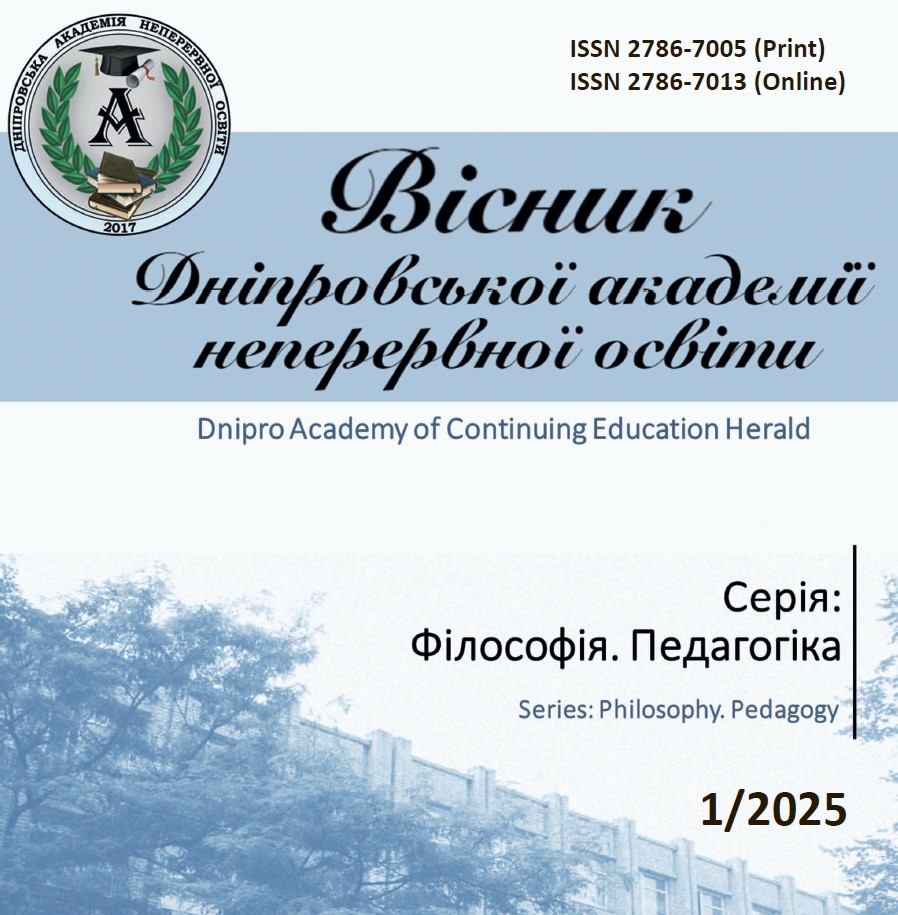FILM MUSIC IN THE REPRESENTATION OF PERSONAL IDENTITY IN THE SPACE OF «PLEASANT PASTIME» CULTURE
Abstract
The article reveals the functions of film music in the representation of personal identity in the culture of «pleasant pastime». The essence of the concept of representation as a symbolic system that, through the interaction of the subject, conceptually and linguistically represents reality, making it understandable, is clarified. It has been determined that film music has a great influence on a person of postmodern culture by means of illocutionary force and intention and the implementation of communicative functions, implemented in three types of communicative acts – informative-cognitive, expressive and motivational. This is how music culturally coerces the individual to form a worldview style that corresponds to postmodern values, a range of images of social stereotypes, desires, interests and needs. It is shown that the phenomenon of film music is an expressive test in the polysemantic and poly-genre synthesis of the film, which, while maintaining its experimental openness, also combines information with visuality, technical issues with artistic and aesthetic ones. It is proven that film music as an expressive text is perceived in reading which is conditioned by the desire of the subject and causes a state of pleasure. The content of understanding the expressiveness of film music text is revealed, as a deepening from the «surface layer» of language to the spiritual, which occurs through the interpretation of linguistic metaphoricity of meanings and meanings embedded in syntax, rhythm, composition. The significance for film music as a text that brings pleasure of changes in the paradigm of sensuality in 20-th-century art, associated with overcoming the distance between subject, the desire to immerse oneself in the bodily nature of picture and sound, at the same time the increasing importance of visuality and sound as priority properties of world perception, is clarified. The nature of film music as a subject of technological processing by editing, sound spectral effects, algorithmic and fractal techniques is revealed, which aims to satisfy the requirement of an extraordinary feeling of pleasure and enjoyment from perception how the film-musical text, while enjoying time, simultaneously with obtaining aesthetic pleasure, represents personal identity, freeing one’s own being through imagination. It has been proven that such identity is realized in the inclusion of the individual in the game of trying on role-playing games in search of the desired of oneself, which transforms self-identification into narrative of the Self, where the story of the Self is formed into a configuration determined by the interaction of identity and selfhood, temporal and spatial changes, threats to the identity crisis, intrigue and event, personality and character.
References
2. Бауман З. Від пілігрима до туриста: стисла історія ідентичності. Національна ідентичність: хрестоматія / упоряд. Т. С. Воропай. Харків: Крок, 2002. С. 279–297.
3. Бабіна С. Маска та самоідентичність особистості. Вісник Київського національного торговельно-економічного університету. 2018. № 1 (117). С. 109–119.
4. Кохан Т. Кінематограф у контексті культурного простору ХХ століття: монографія. Київ: Ін-т культурології НАМ України, 2017. 304 с.
5. Крістева Ю. Як говорити до літератури. Полілог. Київ: Юніверс, 2004. 480 с.
6. Кузьменко А. Музика в українському ігровому кіно останньої третини ХХ–початку ХХІ століття: специфіка функціонування в художній структурі фільму: автореф. дис. … канд. мистецтвознавства. Київ, 2021. 17 с.
7. Міносян А., Варипаєв О. Трансформації та становлення української ідентичності у воєнний час. Культура. Ідентичність. Сучасність: матеріали міжнародної наукової конференції присвяченої 150-річчю Наукового товариства ім. Шевченка (НТШ) (м. Львів, 2–3 листоп. 2023 р.). Львів: Львівський національний університет імені Івана Франка, 2023. С. 152–157.
8. Попович М. Філософія свободи / упоряд.: Л. Ф. Артюх, Н. Б. Вяткіна; передмова Н. Б. Вяткіної. Харків: Фоліо, 2018. 524 с.
9. Попович М. В., Кісляковська І. В., Вяткіна Н. Б. Проблеми теорії ментальності. Київ: Наукова думка, 2006. 403 с.
10. Рікер П. Сам як інший. Київ: Дух і літера, 2002. 458.с.
11. Тримбач С. Звук в екранній культурі України / Литвинова О. Музика в кінематографі України. Каталог. Ч. І. Автори музики художньо-ігрових фільмів, які створювалися на кіностудіях України. Київ. 2009. С. 45–73.
12. Чернієнко О. Візуальні образи ідентичності: мода і стиль. Філософія і педагогіка. 2017. № 1. С. 143–155.
13. Ang I. Identity blues. Without guarantees: in honour of Stuart Hall. Еd. by P. Gilroy, A. McRobbie. London: Verso. 2000. Р. 1–13.
14. Baudrilliard J. La transparence du mal: essai sur les phenomenes extremes. 1990, Galilee. 179 p.
15. Bauman Z. The Individualized Socirty. Cambridge. U. K.: Polity Press. 2001. 259 p.
16. Goodman N. Languages of Art / Goodman N. Indianopolis. Haccet Publish-Ing, 1976.
17. Derrida J. Margins of philosophy. University of Chicago Press. 1982. 271 р.
18. Zagaykevych A., Zaavada I. Development of electronic music in Ukraine: emergence of a research methodology. Organised Sound. 2007. №5. Р. 481–492.
19. Madrazo L. Systems of Representation: A Pedagogical Model for Design Education in The Information Age. Digital Creativity. 2006. Vol. 17. № 2. Р. 73–90.

 ISSN
ISSN  ISSN
ISSN 

